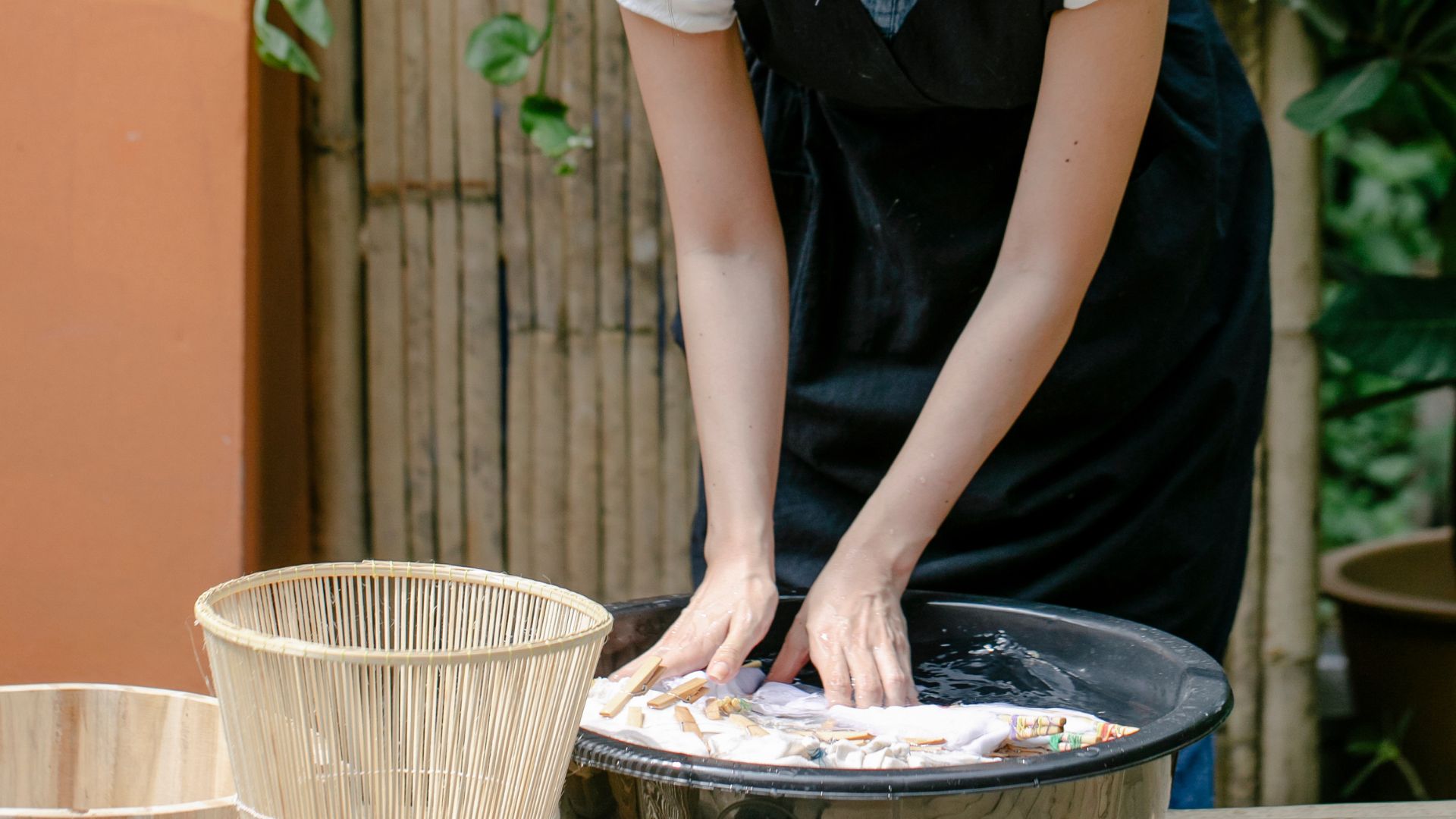Tie-dyeing is an exciting and creative process that results in vibrant and unique patterns on fabric. However, leaving your tie-dye project to sit for an extended period can impact the final outcome. Let’s dive into what happens if tie-dye sits for too long and how it affects your masterpiece.
Understanding the Tie-Dye Process
Before delving into the effects of leaving tie-dye for an extended duration, let’s understand the tie-dye process. Typically, tie-dye involves folding, twisting, or bunching fabric and securing it with rubber bands before applying dye. The dye is then absorbed by the fabric, creating colorful patterns.
Effects of Prolonged Sitting
When tie-dye is left sitting for too long usually beyond the recommended time specified in the instructions or guides it can lead to several potential outcomes:
Fading Colors: One common consequence is faded colors. The prolonged exposure of the dye to the fabric can cause the colors to lose their vibrancy. Instead of bold and bright hues, you might end up with dull or washed-out shades.
Blurred Patterns: The intended patterns may become blurred or less defined over time. The dye might spread and mix more than intended, resulting in a less distinct design.
Uneven Distribution: Extended sitting time can also lead to uneven distribution of the dye. This can create irregular patches of color or cause the dye to seep unevenly through the fabric, altering the intended design.
Potential Damage to Fabric: In some cases, leaving tie-dye for too long might affect the fabric itself. The extended exposure to the dye and its chemical components could weaken the fabric fibers, leading to potential damage or weakening of the material.
Prevention and Solutions
To prevent these issues, it’s essential to follow the recommended instructions provided with the tie-dye kit or guide. However, if your tie-dye project has been sitting for longer than advised, there are steps you can take:
- Rinsing Sooner: If you realize the dye has been sitting for an extended period, rinse the fabric sooner than later. This can help stop the dyeing process and minimize any potential damage or color fading.
- Careful Washing: After rinsing, wash the fabric carefully, following the instructions provided. Use cold water and a mild detergent to remove excess dye and preserve the colors as much as possible.
- Reassessing the Design: If the colors have faded or the patterns aren’t as vibrant as expected, consider embracing the unique outcome! Sometimes, unexpected results can lead to a one-of-a-kind piece of art.

Woman Tie Dyeing Clothes
So,…
In essence, leaving tie-dye to sit for too long can affect the vibrancy, definition, and overall appearance of your design. Following the recommended guidelines and taking timely action if things go beyond the suggested duration can help preserve the intended look of your tie-dye creation.
Tie-dyeing is all about creativity and experimentation. Even if your project doesn’t turn out as planned due to extended sitting, it can still be a beautiful and unique piece of wearable art!
External Resources:
Let’s explore more insights into tie-dye and how timing plays a crucial role in achieving those vibrant, eye-catching designs.
Timing and Tie-Dye Success
Importance of Timing
The duration for which tie-dye sits before rinsing plays a pivotal role in the final outcome. It’s a delicate balance between allowing the dye to set and not letting it sit for too long.
- Setting the Dye: Allowing the dye to set for the recommended time ensures that the colors penetrate the fabric fibers adequately. This results in vibrant and long-lasting designs.
- Avoiding Overexposure: However, leaving the fabric with the dye for an excessive period can lead to the issues mentioned earlier. Timing is crucial to strike the right balance between setting the colors and preventing overexposure.
Factors Influencing Timing
Several factors can influence how long tie-dye should sit before rinsing:
- Dye Type and Fabric: Different types of dyes and fabrics have varying setting times. Some dyes require more time to set than others, and certain fabrics might absorb dye differently.
- Desired Intensity: The intensity of colors you desire also impacts timing. For more vibrant hues, longer setting times might be necessary, but it’s crucial not to exceed the recommended duration.
- Environmental Conditions: Temperature and humidity can affect how quickly the dye sets. Warmer temperatures might accelerate the setting process, while cooler environments might slow it down.
Tips for Optimal Results
To ensure the best outcome for your tie-dye project:
- Follow Instructions: Always follow the specific instructions provided with your tie-dye kit or dye brand. These guidelines are tailored to the particular dye and fabric you’re using.
- Test and Experiment: If you’re unsure about timing, consider doing a test swatch or experimenting with smaller pieces of fabric to gauge how the colors set before applying them to your main project.
- Monitor Closely: Keep a close eye on your tie-dye project while it’s setting. Check periodically to ensure it doesn’t sit for longer than necessary.
- Adjust as Needed: If you notice the colors setting too quickly or slowly, adjust your approach accordingly. You might need to rinse earlier or let it sit a bit longer based on your observations.
Embrace the Journey
Tie-dyeing is as much about the process as it is about the final product. Embrace the experimentation and creative journey, even if your timing isn’t perfect. Each tie-dye project teaches valuable lessons, whether it’s about colors, patterns, or the timing that suits your unique artistic vision.
In conclusion, while leaving tie-dye to sit for too long can impact the final result, understanding the balance of timing, following guidelines, and a willingness to experiment can lead to stunning and personalized tie-dye creations.
So, dive into your tie-dye adventures, keep an eye on that clock, and enjoy the colorful journey of creating wearable art.
External Resources:
Comparison tabular on this
Effects of Tie-Dye Sitting Too Long vs. Optimal Timing
| Effects of Prolonged Sitting | Optimal Timing for Tie-Dye Success |
|---|---|
| Colors may fade, resulting in a dull appearance. | Follow specific instructions provided with the tie-dye kit or dye brand. |
| Patterns may become blurred or less defined. | Test the dye’s setting time on a small fabric swatch before the main project. |
| Uneven distribution of dye leading to irregular patches of color. | Monitor closely and rinse fabric at the recommended time to avoid overexposure. |
| Potential damage to fabric fibers due to extended exposure to dye. | Adjust timing based on environmental conditions and desired color intensity. |
Wrapping up
Tie-dyeing is an art form that combines creativity, color, and timing. While letting tie-dye sit for too long can impact the final look resulting in faded colors, blurred patterns, or potential fabric damage understanding the optimal timing for dye setting is key to achieving vibrant and well-defined designs.
Remember, the journey of tie-dyeing is as colorful as the creations themselves. Embrace experimentation, follow guidelines, and stay attuned to the timing to craft your unique wearable art. Whether your tie-dye project follows every guideline or takes a creative detour, it’s a canvas of self-expression and discovery.
So, grab those rubber bands, mix those dyes, and embark on a colorful journey where timing, creativity, and a touch of experimentation create breathtaking tie-dye masterpieces!
External Resources:

For over a decade, I’ve been Mike, an artist, crafter, and designer deeply immersed in the Croc world. I thrive on crafting unique, size-inclusive patterns, fostering creativity, and sharing them on ktforum.com. My designs aim to ignite your creative spark and delight you, ensuring clarity and ease of use through rigorous testing. Join me in expressing your creative flair and showcasing your craft with joy.
Related Posts
- Reviving Your Tie-Dye: How to Reapply Dye for Better Results
Tie-dye projects are a blast, but sometimes the colors don't pop as expected due to…
- Understanding Tie-Dye Settling and Mixing with Other Dye Projects
Tie-dyeing is a vibrant and creative way to infuse life into fabrics, but ensuring colors…
- Understanding Tie-Dye: A Splash of Creativity
Tie-dye is an art form that’s all about infusing plain fabrics with vivid bursts of…
- Setting Tie-Dye in a Refrigerator: Is It Possible?
Tie-dyeing has made a bold comeback in the fashion world, offering a vibrant and personalized…

